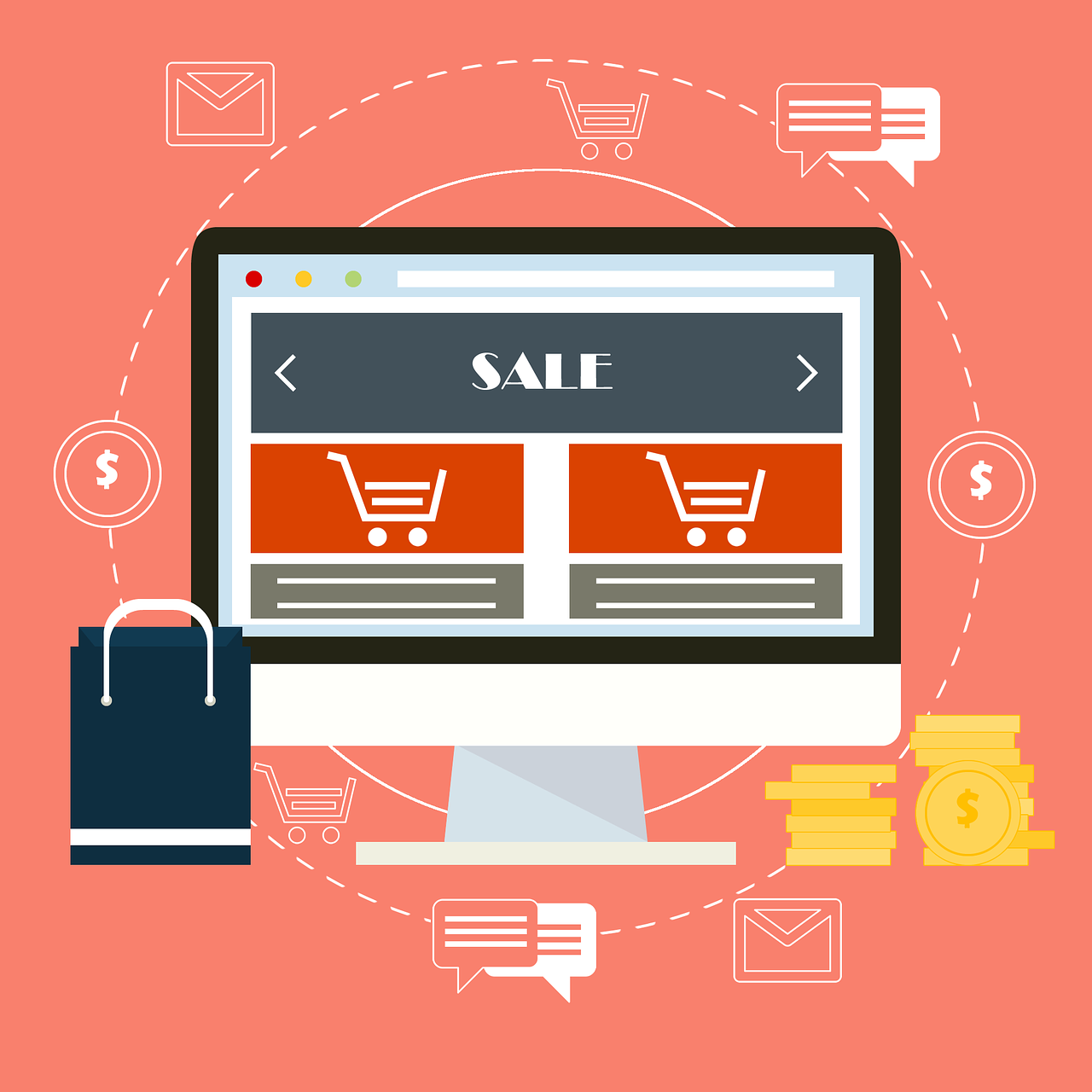The growth of e-commerce in the last decade has been phenomenal. The good thing is its growth continues to soar at a solid rate. In 2017, e-commerce generated around $2.3 trillion in sales. With the phase at which it is growing, we are expecting it to reach $4.5 trillion by 2021. So, if you are looking to start your own e-commerce site to grow your business then there is no better time than now.
What do you want to sell?
No matter whatever physical goods you want to sell on the internet, you need an inventory of it. In other words, inventory can be considered as the lifeblood of your e-commerce business.
For some people this inventory is easy to come, these people include artists, crafters, fashion designers, and those who have the skills and creativity to source their own inventory. And they really know what they want to sell online: Their creations!
If you do not fall under this category of people, then you need to research products that people love to buy online.
Obviously, if your product doesn’t gather enough interest in people, they are not going to buy it. So, how can you find the ones that people love and buy? You can know it from the sources that are very successful in e-commerce. And what are the names that strike your mind? Yes, Amazon and eBay.
Fortunately, these sites offer resources that let their users know the products that are quite popular and trending with sales figures. Before taking a wild guess on products you want to sell online check out these couple of links to help you make an informed choice.
- eBay Trending: https://www.ebay.com/trending
- Amazon Best Sellers: https://www.amazon.com/Best-Sellers/zgbs
Choosing your domain and brand name
Once you have made your decision on what you want to sell, the next step in the process would be choosing your brand name or domain name.
It is best to have a domain name with .COM extension over other ones. However, your second can third best choices are .NET and .ORG extensions respectively.
Before choosing a brand name, make sure it communicates the product you are selling. You can come up with a fancy brand name that sounds attractive and short. However, if it doesn’t convey what you are selling on your site, it will comparatively take a lot of time, effort, and money to promote it and make your brand name familiar to users.

Choosing an eCommerce platform
Shopify and WooCommerce are the two most popular and easy to use eCommerce platforms on the internet. Both are known for their ease of use and feature availability.
Shopify
Shopify is by far the best self-hosted e-commerce platform out there. Meaning, you do not have to worry about technical aspects of getting your website online; like hosting, SSL certifications, and bandwidth. That means no matter how much traffic you drive to your site, you don’t have to worry about your site crashing down due to low resources on the server-side.
Pricing Plans
Shopify is not free, it is a paid service. They have about four plans which you can choose from based on your needs. These plans include:
- Shopify lite: $9/month
- Basic Shopify: $29/month
- Shopify: $79/month
- Advanced Shopify: $299/month
You can check their official pricing page to know the features that are included in each of these plans. However, the charges don’t just stop there, they will take a small cut out of every transaction that happens in your store. There will also be added transaction fees on top of that if you decide to use PayPal or Stripe as your payment gateway.
Remember that each payment gateway has a unique transaction charge. So, go through all the details before choosing the ones you want to use in your online store.
Theme Selection
Shopify has a good number of themes both free and paid which you can install for your own site directly through their dashboard. At the time of writing this guide, Shopify has about 68 themes in total that are listed on their official website. They have about 10 free themes that you can use without paying anything extra. But, if you decide to have a more premium feel to your website, you can go ahead and purchase a paid theme that will cost you somewhere between $140 to $200.
Most people find free ones to suit their needs and with little coding knowledge they can be customized to your needs. So, the choice of using either a paid theme or go with the free one is up to you.
Support
Shopify offers extensive support on their product. They can be reached anytime through phone, email, or live chat. One of the things that make them stand out from other e-commerce platforms is their customer support. Additionally, they have an elaborate knowledge base that covers solutions to most questions and issues you might come across while using Shopify.
Shopify SEO
When it comes to the SEO aspect, most of the onsite SEO part is taken care of by Shopify itself for you. They have powerful servers in place so you don’t have to worry about page load times. Their codes are clean and they have a
As long as you have detailed descriptions, titles, and optimized images for faster loading times, your store should be all set from an SEO perspective.
Features included
These are some of the top features you will have while subscribing to any Shopify plan
- Support for unlimited products
- Integrated payment gateways
- Support for credit card payments
- Support for multiple languages
- Facebook selling module
- Support for selling both physical and digital products
- Unmetered storage space
- Unmetered bandwidth to handle unlimited traffic
- Daily automatic site backups
- Free SSL certificate for your domain
- Access to site stats and product reports
- Manual order creation
- Support to print orders
- Support for customer profile
- Fully featured mobile app
- Access to free themes
- Support for social media integration
- Support for Gift cards (Selected plans)
- And a lot more…
WooCommerce
WooCommerce is based on WordPress, one of the most popular blogging and content management system (CMS) on the internet. To be more accurate WooCommerce is an open-source plugin that you can install on your WordPress site.
If you want to know how to set up your own WordPress site, then check out this guide.
Unlike Shopify, WooCommerce is not a self-hosted solution. This means you have to take care of the hosting, and a bunch of other responsibilities that come with it, like backups, SSL certification, bandwidth, and space management.
Pricing
Both WooCommerce and WordPress are open-source and free to use on any number of your websites. However, you need to take care of other costs that are involved in setting up your own website. This includes
- Purchasing a domain name
- Find a hosting provider
- Buying SSL certificate for your domain
Purchasing a domain name will cost you somewhere around $10 to $15 per year. A decent shared hosting plan costs somewhere between $5 to $10 a month. Some hosts do provide a free basic SSL certificate. If you are looking to purchase a separate SSL certificate for your domain name, then it can cost you around $70 a year.
If you decide to use a free SSL certificate, then the cost of setting up a WooCommerce Store is significantly lesser than Shopify. Provided you have all the technical knowledge of running a website.
Theme selection
This is one of the strongest aspects of WooCommerce. WordPress practically offers thousands of themes that can be used for free. The good thing is most of these themes work together really well with WooCommerce as long as the theme followed the recommended guidelines from WordPress.
Apart from the free themes that are readily available to download directly from WordPress, there is also a wide range of paid ones that can be purchased from sites like Themeforest. Some paid themes even offer additional functionalities that are not readily available with the default installation.
WooCommerce Support
WooCommerce encourages its users to register on the woocommerce.com website for free and obtain support from there. It also has a strong user community and there are a number of blogs and forums that cover WooCommerce issues and solutions. However, if you are expecting more personalized support through email, live chat, or on a phone line then WooCommerce has none in place.
WooCommerce SEO
WooCommerce is not a standalone eCommerce platform, so its coding is not specifically designed with eCommerce in mind. Built-in SEO options that come along with WordPress is limited. However, you can make use of certain plugins like Yoast SEO, which is one of the popular SEO plugins for WordPress to take care of meta tags, and meta information that search engines look for while crawling your pages.
Which one is the best, Shopify or WooCommerce?
Both these platforms come with their own set of pros and cons. Also, both these platforms can appeal to a different set of people.
Ease of Use
Shopify practically takes care of most aspects for you, you don’t have to worry about hosting, server management, backups, SSL certification, and a bunch of other things. With Shopify, everything is cooked for you to get started straight away with easy to use interface which you can make use of to alter the site for your needs.
Setting up a WooCommerce website demands you to have a bit of technical knowledge from your side. You need to take care of hosting, installing WordPress to your server, purchasing SSL certificates, and other basic knowledge on how to use and operate WordPress
Winner: Shopify
Theme selection
There is a good healthy selection of themes available with Shopify both free and paid. Paid themes can cost you somewhere between $140 to $200. There is no doubt that Shopify themes look and feel great. However, you have to agree to the fact that they are no match for the number of free and paid themes available for WooCommerce. In fact, it is one of the strong driving points for choosing WooCommerce over Shopify.
Winner: WooCommerce
SEO
WooCommerce is based on WordPress, which is primarily designed as a content management system and its core part of the code is directed in that direction. Owing to its ease of use and wide user base, developers took advantage of its flexibility to create the WooCommerce plugin which allows users of WordPress to run an eCommerce website.
For adding meta-information on WooCommerce you need to depend on third-party plugins like Yoast SEO. Because there is no built-in SEO support in WordPress that is directed towards an eCommerce site.
Shopify is designed, created, and coded with e-commerce in mind. Most web developers agree to the fact that Shopify has cleaner codes when compared to its competitors. Additionally, it has a natural linking structure that offers a smooth user experience. We should also do not forget that all Shopify websites are hosted on some of the most powerful servers in the industry. This means Shopify sites are fast and their pages take relatively lesser time to load. All these aspects are taken very seriously by search engines and help your site to enhance its rankings on search results.
Winner: Shopify
Support
Most of the support for WooCommerce is basically driven through its rich user community. You cannot get personalized support from WooCommerce developers directly to resolve whatever issues you might come across.
Shopify, however, has an extensive support system in place to guide along and help you at every step of the way in successfully creating your own eCommerce site. Their support team can be reached anytime and any day through phone, email, and live chat. Additionally, they also have a detailed knowledge base in place which should answer most questions and help you resolve common problems you might encounter.
Winner: Shopify

